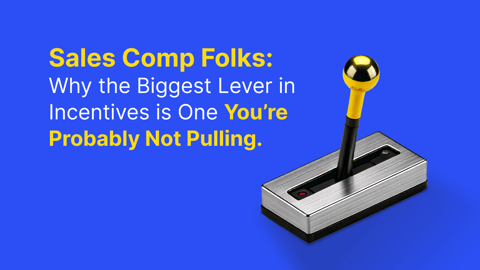Ah, it’s the time of year when love is in the air. Some may argue that you don’t need a specific holiday, a dozen roses and a box of chocolates to prove your loyalty to a significant other. But there’s a lot to be said for showing appreciation to strengthen your relationship.
Appreciation has many forms—roses are nice for some. For others, doing the washing will have them catching feelings. It all comes down to your Love Language. In 1992, Dr. Gary Chapman wrote a book, outlining the Five Love Languages® —the different ways people express and receive love. Understanding your partner’s expectations and needs will do more for a relationship than Cupid can.
The Five Love Languages applies to all kinds of relationships amongst friends, family and yes, even colleagues. In fact, Dr. Chapman made his concept more workplace appropriate with the book The Five Languages of Appreciation in the Workplace.
In a recent McKinsey & Company survey, the top 3 factors employees cited for breaking up with their employers included: not feeling valued by the organization (54%), by managers (52%), or don’t feel like they have a sense of belonging (51%). Some employers assume feeling valued translates to more cash in hand. But that’s not always the case. It comes down to what Language of Appreciation speaks to you.
With WFH becoming part of the new norm, showing appreciation in a meaningful way is more important than ever. The numbers are there—in the past two years, people are writing more resignation letters than love letters. It’s no surprise, long-distance relationships are hard to maintain. Dr. Chapman published his concept of love languages the same year the very first text message was sent. So how will they translate in this digital-first world? Let’s find out.
The Five Languages of Appreciation at Work
#1 Receiving Rewards
Not surprisingly, this is the most popular love language at work. When you think of rewards in sales, you think of compensation. If a seller is struggling to hit targets, especially if this is their number one love language, they’re going to be frustrated. However, this isn’t just a numbers game. The answer is in behavioral science.
The key is to coach your team to build better habits. Charles Duhigg’s book, The Power of Habit introduces the idea of a “habit loop”. Habits are formed within a three a part process: cue, routine, and reward. In sales, we use commissions and incentive compensation to reward behaviors and solidify habits. That’s why we believe sellers should be coached through a commission feedback loop. Here’s what it looks like:
- Set achievable goals
- Reward actions and behaviors, not just the outcome
- Use commission as feedback
The third step in the loop is important to emphasize. Adding commissions and incentive compensation along the pipeline is an effective way to form and reinforce good habits, that lead to outdoing past performance.
#2 Words of Affirmation
Since the pandemic hit, the feeling of disconnection is a growing concern. More and more, this language of appreciation is becoming important, as employees seek more meaningful interactions with their managers and their colleagues. The keyword being meaningful.
As previously mentioned, studies have shown that one of the top three reasons employees are quitting their job is not feeling a sense of belonging. This one seems simple. Tell your sellers that they’re doing a good job. And in this remote world, there are so many ways to do it: email, Slack channel, virtual 1:1, and even a comment left in the G-sheet. But here’s the thing, there is a big difference between praise and gratitude when it comes to motivating your team.
For praise to have a positive impact, you need to be specific, and it can’t be overdone (you won’t be taken seriously). Most praise/feedback (that includes commissions!), focuses on the outcome, not what led to the to the result. We should be positively reinforcing behaviours that lead to success. It is proven to motivate better performance.
So instead of words of praise, think words of gratitude. Gratitude has both short- and long-term positive effects on productivity. Organizational psychologist, Adam Grant, found that grateful leaders motivate employees to be more productive.
Here’s what gratitude sounds like in a comprehensive payee dashboard:

#3 Quality Time
For the past couple of years, feelings of disconnection and isolation have fueled the rise of the Great Resignation. While there is no shortage of meetings, direct messages and emails being thrown around, these types of interactions are leading to more burnout.
The key is to make your interactions meaningful. Book 1:1 virtual chats and give your undivided attention. Show your team you’re invested in their success. Break down their quotas into specific actions they can take to hit their number. One way is to build a blueprint to quota to have more structured pipeline conversations to help each rep understand how to close the gaps when it comes to meeting our goals.
#4 Acts of Service
Actions speak louder than words. Those who value Acts of Service prefer you show appreciation, rather than say it. For example, if your seller has a busy day of meetings, offer to take admin tasks off their plate. Or, you may not be able to stop by with a coffee or lunch to fuel their day, but you can send an Uber Eats gift card.
#5 Physical Touch
A couple of years ago, physical touch in a workplace setting would be something like a firm handshake after closing a deal. Our engineering team hasn’t quite perfected AR-fist bumps (yet), so for now, touch becomes touchpoint. When you think about the purpose of that handshake or fist bump, it’s to show encouragement, celebration, and sincerity. Rather than an awkward virtual fist-bump, ping your team member words of appreciation, or look directly at the camera (think of this as virtual eye contact) when offering your congrats for hitting a milestone.
Hit Those Targets Like Cupid
Love is all you need? Sorry John and Paul, it’s not that simple. Rewarding your team in a meaningful way will help prevent seller burnout and attract top tier employees. It all comes down to behavioral science. When you use compensation effectively, and dump the math and formulas, you’ll become fluent in your team’s language of appreciation.
Ready to experience love at first sight? Book a demo today.



